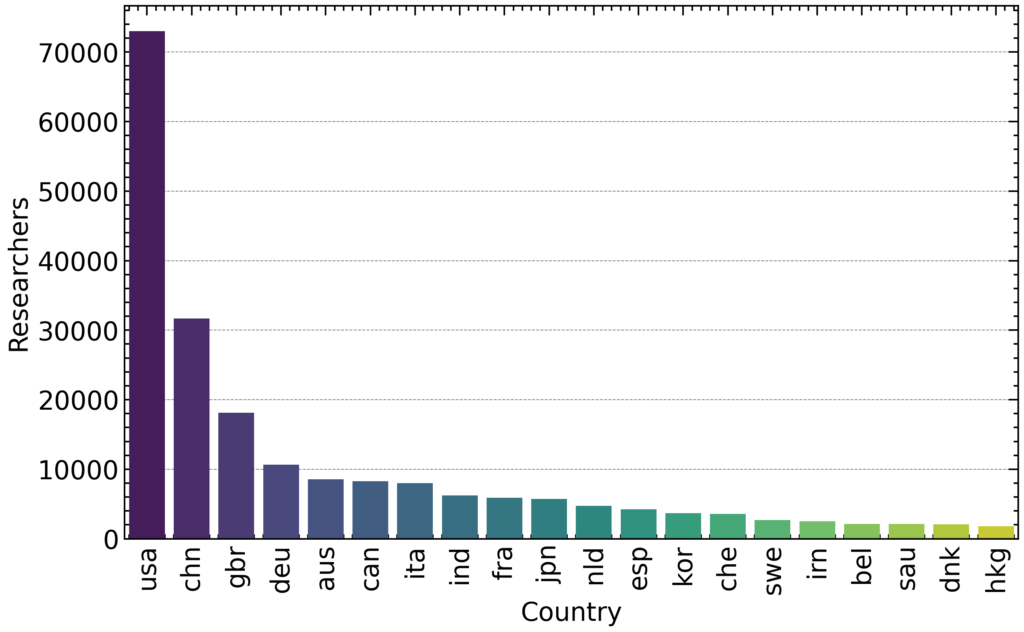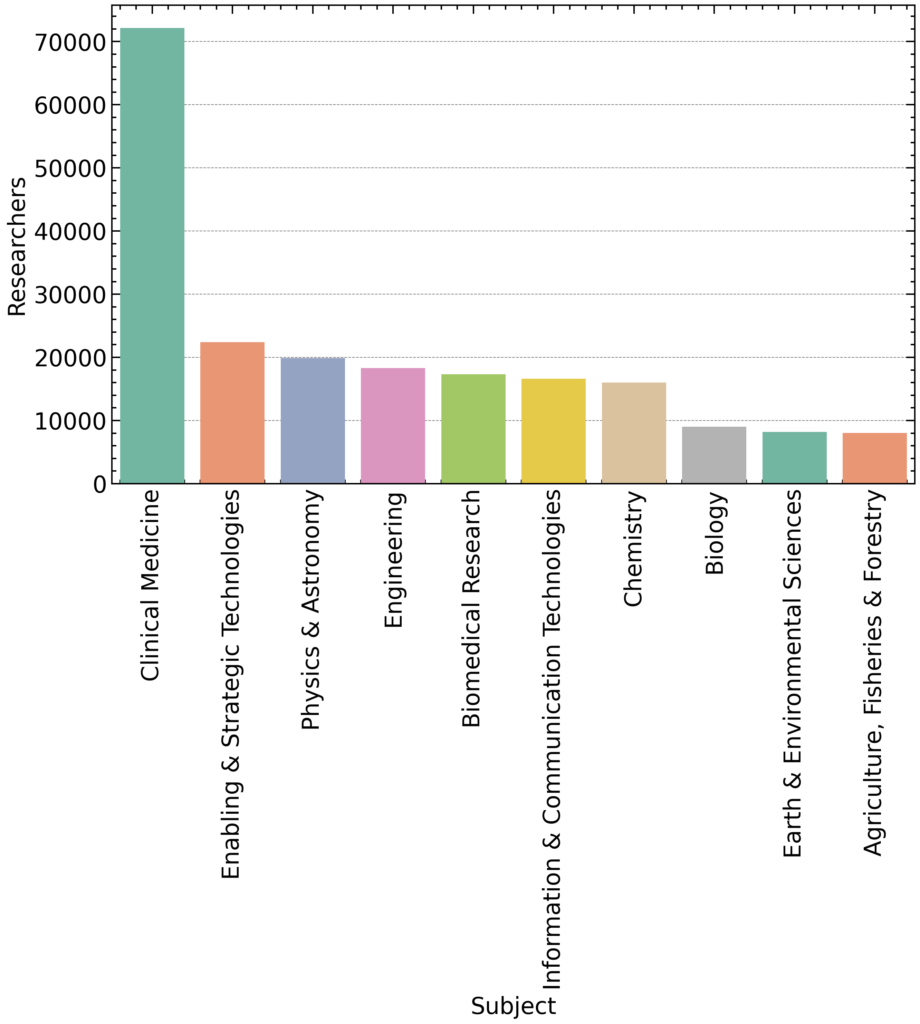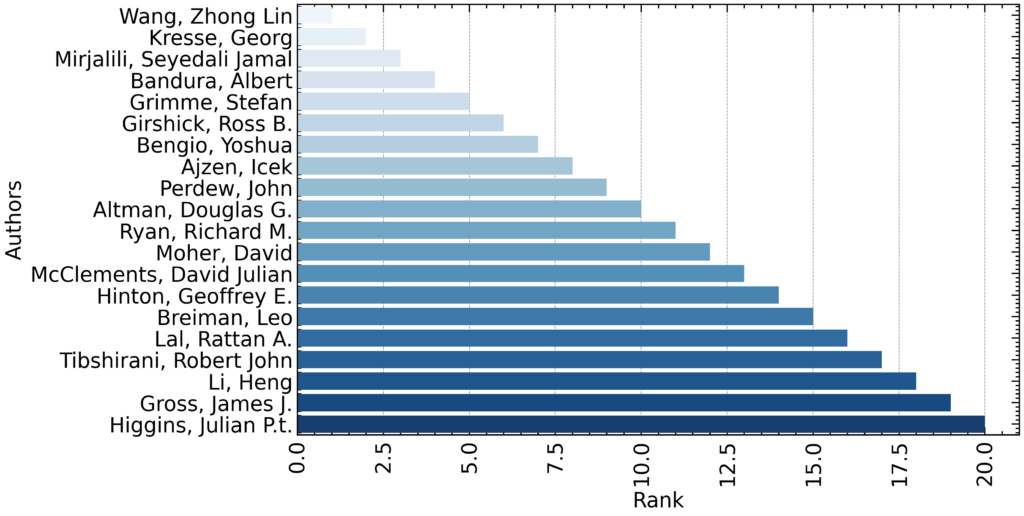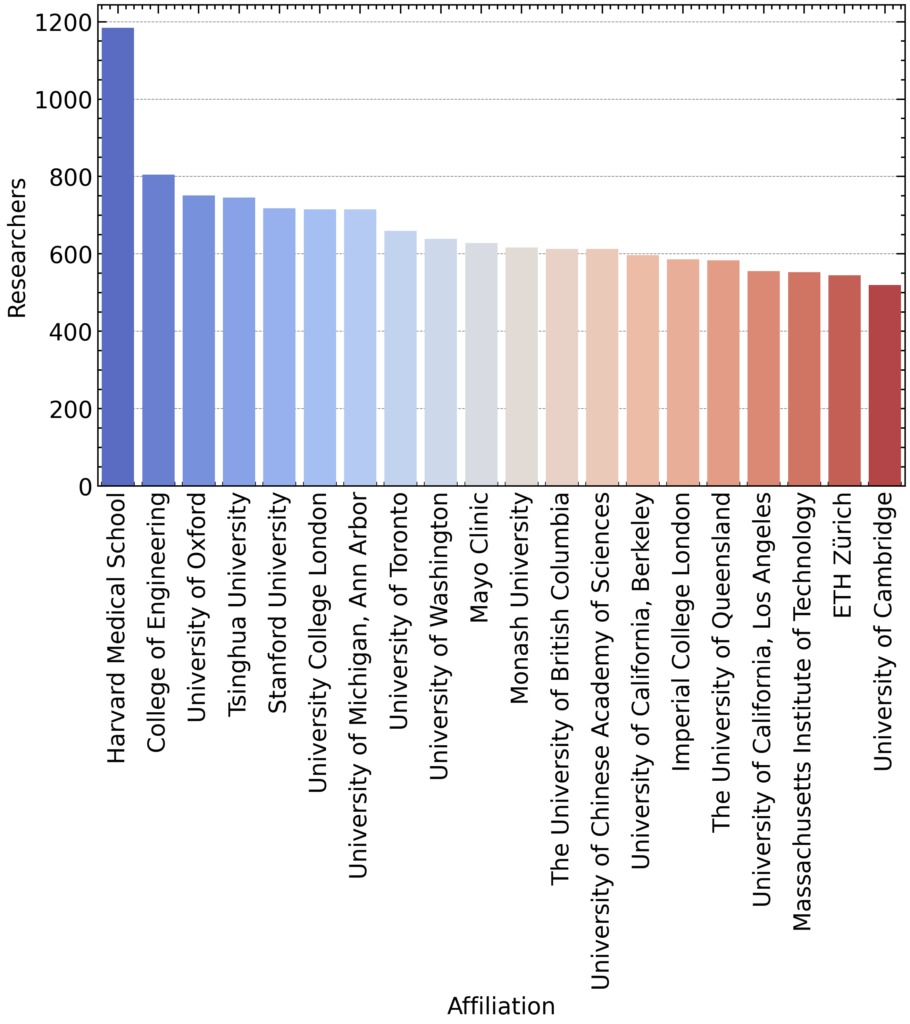Stanford University, in collaboration with Elsevier, annually publishes the Top 2% Scientists List, ranking researchers worldwide based on standardized citation indicators [1]. The Single Year 2025 dataset reflects citations accrued in 2024, providing a real-time snapshot of research influence across fields, institutions, and nations.
Global Country Representation

The United States leads overwhelmingly, with ~74,000 scientists, reflecting its broad research ecosystem. China follows with over 31,000 researchers, while the UK (~18,000), Germany (~11,000), and Australia (~9,000) form the next tier. India, Canada, Italy, France, and Japan also appear prominently, underscoring the globalization of impactful science. Notably, emerging hubs such as Iran, Saudi Arabia, and Hong Kong mark growing contributions from non-traditional regions. This geographic skew highlights established research infrastructures in the US and Europe while showing rapid expansion in Asia.
Subject and Field Distribution

Clinical Medicine dominates with over 70,000 scientists, far surpassing other fields. Enabling & Strategic Technologies (~22,000), Physics & Astronomy (~20,000), Engineering (~17,000), and Biomedical Research (~16,000) also stand out. Information & Communication Technologies, Chemistry, Biology, Earth & Environmental Sciences, and Agriculture follow. The dominance of health-related fields mirrors the surge in biomedical and clinical publications, particularly in the post-pandemic era, while technology-driven fields highlight the centrality of AI, computing, and engineering.
Top Authors (Single Year Performance)

The ranking of scientists such as Zhong Lin Wang, and Georg Kresse shows the breadth of influence across disciplines. Figures like Geoffrey Hinton and Yoshua Bengio represent AI and machine learning, while others, including Albert Bandura in psychology and Douglas Altman in medical statistics, reflect cross-disciplinary impact. The diversity here illustrates that top single-year influence spans not only STEM but also behavioral sciences and health research, emphasizing how rapidly evolving disciplines rise to prominence in annual citation impact.
Institutional Distribution

Harvard Medical School dominates with over 1,100 researchers, followed by the College of Engineering, University of Oxford, Tsinghua University, and Stanford University. The presence of elite US, UK, Chinese, Canadian, and Australian institutions highlights the concentration of scientific influence in well-funded ecosystems. Interestingly, institutions like Mayo Clinic and Monash University show the role of specialized medical and interdisciplinary research hubs in driving high-impact science.
Key Takeaways
- Global Concentration: The US retains dominance, but China is catching up fast, with other Asian and Middle Eastern countries expanding.
- Field Bias: Health and medicine dominate, reflecting funding priorities and societal needs.
- Individual Impact: Single-year rankings show how specific scientists surge due to breakthrough papers or paradigm-shifting work.
- Institutional Clusters: A small group of universities and research hospitals generate disproportionate global influence.
Conclusion
The 2025 Stanford Top 2% Scientists (Single Year) ranking is a mirror of 2024’s citation impact—not just rewarding career-long contributions but identifying where influence is accelerating now. For policymakers, institutions, and researchers, it provides a compass to understand global research trends, strengths, and opportunities for collaboration.
References
- Ioannidis, John P.A. (2025), “August 2025 data-update for “Updated science-wide author databases of standardized citation indicators””, Elsevier Data Repository, V8, doi: 10.17632/btchxktzyw.8